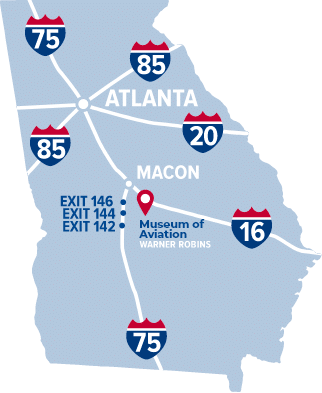The O-1E is a two-place observation and liaison aircraft developed from the commercial Cessna Model 170 in 1949. Originally designated as L-19s, Bird Dogs were used by the USAF, Army, and Marines for such tasks as artillery spotting, front-line communications, medical evacuation, and pilot training.
In Vietnam O-1s were used by forward air controllers (FAC) for reconnaissance. A FAC, often an experienced fighter pilot, was assigned to a specific geographical area so that he could readily identify enemy activity. If a FAC observed enemy ground targets, he marked them with smoke rockets so they could be easily attacked by fighter-bombers. The FAC remained on the scene to report bombing results.
The USAF ordered more than 3,200 Bird Dogs, most of which were built as L-19As between 1950 and 1959. Warner Robins Air Logistics Center was responsible for the logistics support for all USAF O-1s during its service career. The L-19A on display was delivered to the USAF in February 1954; it was subsequently transferred to the US Army in April 1954. At some point the aircraft was transferred to the French Air Force under the Military Assistance Program. In 1984, the Museum acquired the aircraft through disposal channels in Europe and the aircraft was shipped to Robins for preservation and display. It is currently marked as a FAC aircraft used by the USAF in Southeast Asia during Vietnam.











